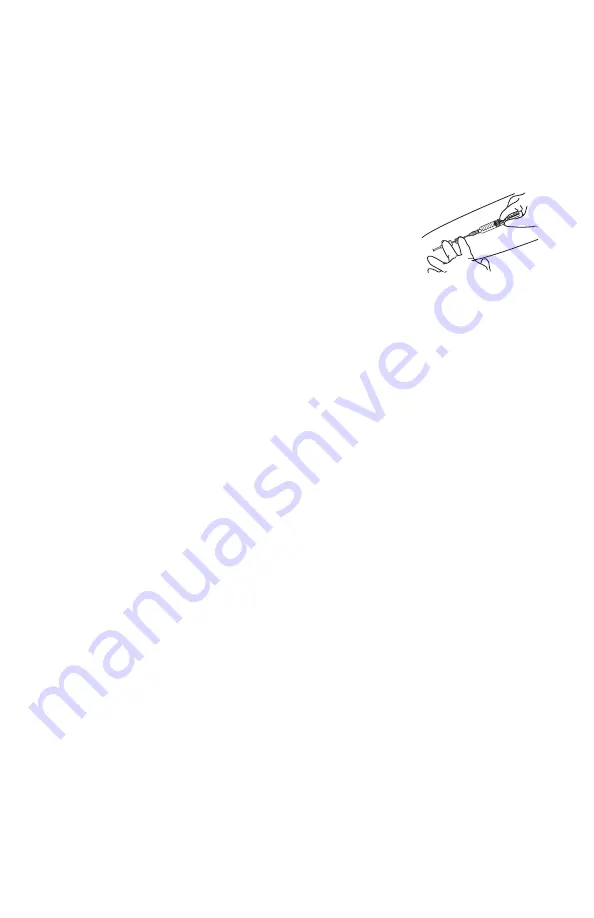
11
approximately 2 cm and reattempt stylet removal. Repeat this procedure until the stylet
is easily removed. Once the stylet is out, advance the catheter into the desired position
(zero mark).
Caution:
Never leave stylet or stiffening wire in place after catheter insertion; injury
may occur. Remove stylet or stiffening wire and T-lock (as applicable) after insertion.
12.
Aspirate and Flush each Lumen
A.
Attach primed extension set and/or saline-filled syringe.
B.
Aspirate for adequate blood return and flush each lumen of the
catheter with at least 10 mL of sterile saline to ensure patency. In
addition, lock each lumen of the catheter with sterile saline.
Caution:
To reduce potential for blood backflow into the cath
-
eter tip, always remove syringes slowly while injecting the last
0.5 mL of sterile saline.
C. Attach a new sterile injection/needleless cap to each catheter hub.
WARNING:
The fluid level in the catheter will drop if the catheter connector is held
above the level of the patient’s heart and opened to air. To help prevent a drop in
the fluid level (allowing air entry) while changing injection caps, hold the connector
below the level of the patient’s heart before removing the injection cap.
13. Securing the PowerMidline
™
Catheter
The StatLock
®
Stabilization Device is included in PowerMidline™ Catheter kits.
Please refer to Instructions For Use on the proper use and removal. The StatLock
®
Stabilization Device should be monitored daily and replaced at least every seven
days.
Caution:
The catheter must be secured in place to minimize risk of catheter break-
age and embolization.
WARNING:
When using alcohol or alcohol-containing antiseptics with polyurethane
midlines, care should be taken to avoid prolonged or excessive contact. Solutions
should be allowed to completely dry before applying an occlusive dressing. Chlor-
hexidine gluconate and/or povidone iodine are the suggested antiseptics to use.
WARNING:
Alcohol should not be used to lock, soak or de-clot polyurethane mid-
lines because alcohol is known to degrade polyurethane catheters over time with
repeated and prolonged exposure.
WARNING:
Acetone-based solutions and polyethylene glycol containing ointments should
not be used with polyurethane catheters, as these may cause failure of the device.
WARNING:
Do not wipe the catheter with acetone-based solutions, tincture of iodine
or polyethylene glycol-containing ointments. These can damage the polyurethane
material if used over time.
Caution:
Do not bend catheter at sharp angles during implantation. This can com-
promise catheter patency.
Caution:
Do not occlude or cut catheter when using sutures to secure catheter.
Caution:
Do not suture through or around any part of the catheter’s tubing (shaft or
extension legs). If using sutures to secure catheter USE THE SUTURE WINGS and
make sure they do not occlude, puncture, or cut the catheter.


































